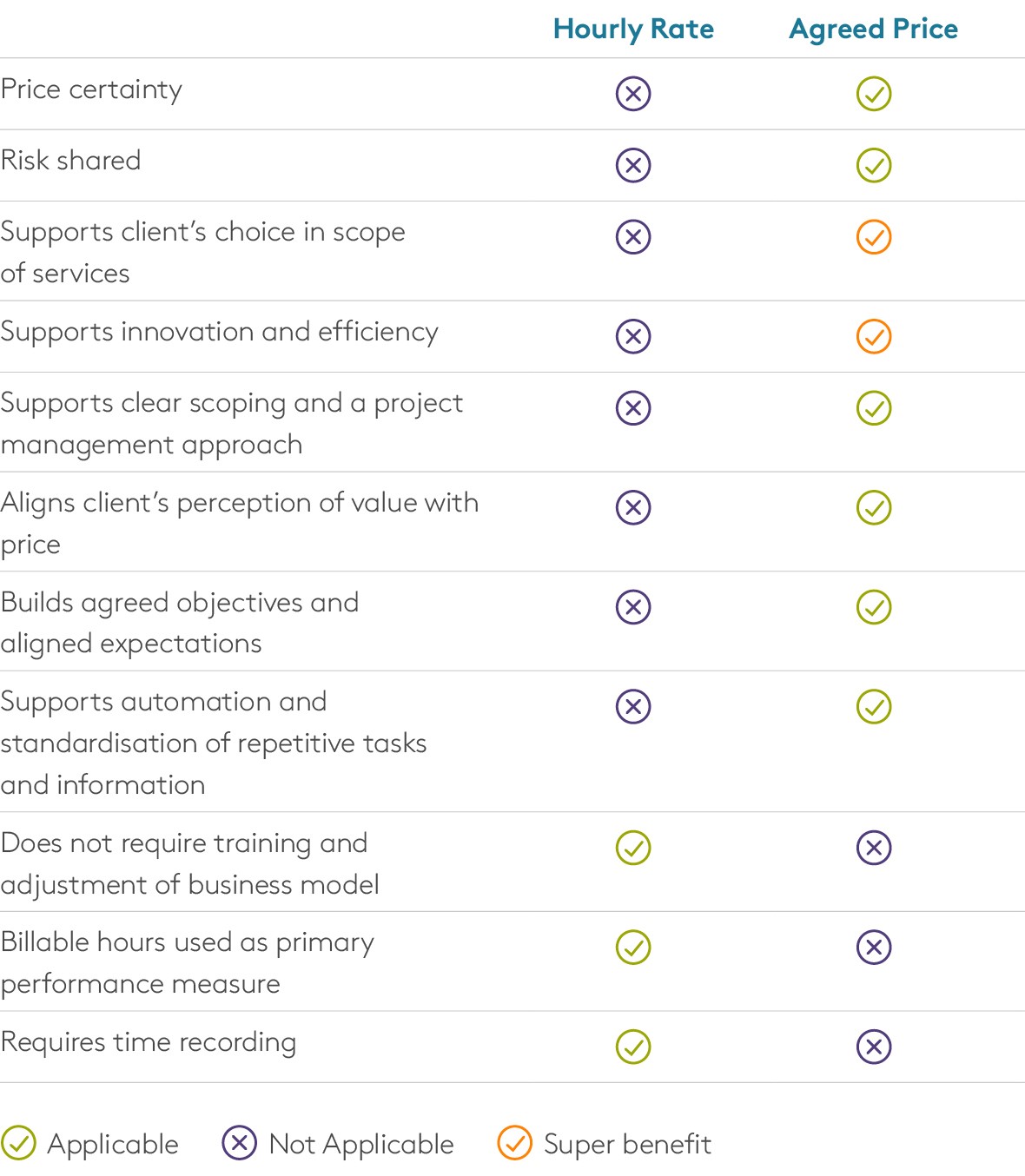There is a lot more to pricing legal services than billing according to the hourly rate, and evidence suggests that there are significant benefits to alternative pricing models.
Issues with traditional legal services pricing
Our observations from complaints and auditing indicate that many lawyers perform their services in the traditional way: one-to-one, charged at the hourly rate rather than at an agreed or value-based price, with little standardisation or use of technology to increase efficiency. This way of practice is ‘normal’, but it may contribute to a number of bad outcomes. Time billing can be the root cause of much customer dissatisfaction, including uncertainty around pricing, and the inefficiency of the service. This business model can also impair the profitability and productivity of a law practice. For example, US data indicates that such law practices suffer from what is known as ‘cost disease’, which increases the price of services to clients, and severely limits the productivity of lawyers. As a lawyer is selling their time, they do not have an incentive to save time and be more efficient. They experience the stress of having to take time out of billable hours to work on the business, which leads to very long work hours. Anecdotally, we believe that to be the case in Australia too. Performance measures by time billing targets can also negatively impact on lawyer health and well-being.
Clients in the ‘people law’ areas are often put off from hiring a lawyer because of uncertainty around how much the services will cost. Clients dislike the uncertainty of services priced by the hourly rate and perceive them to be more expensive and worse value for money.
Innovation in pricing can be an important enabler of innovation in other areas of law. Innovation is frequently prompted by a better understanding of a problem or experience from the end-user’s perspective. A lawyer who works more closely with their client to agree on value seeks a shared understanding of how the matter should operate, how risk should be shared and what the client really needs from their lawyer. Armed with this information, a lawyer can gauge how they can make their services better and more user-friendly for clients. Further, uncoupling pricing from time and billing by the hour helps lawyers to build more efficient and streamlined products, processes and business models with the assistance of technology.
Innovative pricing models
Agreed pricing has been adopted by the legal profession as a major innovation in the pricing of services. We have provided guidance as to whether these practices are permissible under the Legal Profession Uniform Law 2014 (Uniform Law). Find out more about each pricing model on the links below. There is also a handy table to help you understand the benefits of agreed pricing compared to hourly rates. Find out more about agreed pricing.
Pricing models summary table

(Information on the table is as follows: there are several advantages of Agreed Pricing over hourly rate service arrangements. These include:
• Price certainty
• Shared risk
• Supports clear scoping and a project management approach
• Aligns client’s perception of value with price
• Builds agreed objectives and aligned expectations
• Supports automation and standardisation of repetitive tasks and information.
The super benefit of adopting an Agreed pricing models is that it supports innovation and efficiency. While both support client’s choice in the scope of services, Agreed Pricing provides the client with more flexibility in their arrangement with the lawyer or law practice. These benefits may not apply to the hourly-rate model.
Adopting an hourly rate model, the law practice may not require training and adjustment of the business model, billable hours can be used as a primary performance measure, and time recording would be required. These, however, do not apply to Agreed Pricing models.